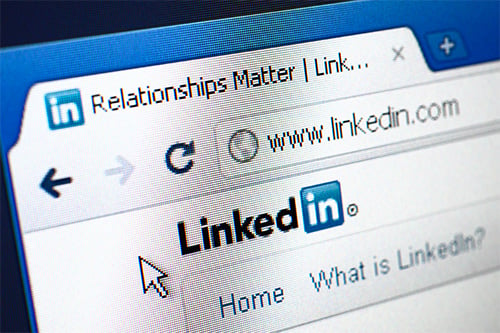

LinkedIn is the go-to social media platform for professionals today, and, as a result, is a great way to attract new insurance clients, which is why agencies need to be utilizing this channel effectively.
“LinkedIn actually has a higher visitor-to-lead conversion rate than any other social media channel,” said Becky Schroeder, chief marketing officer at Insurance Technologies Corporation (ITC). “HubSpot did a study of this and found that LinkedIn visitors converted to leads at 2.7%, which is 277% higher than Twitter and Facebook, both of which had a conversion rate of less than 1%.”
Another benefit of using LinkedIn is that it’s not as crowded as other social media platforms, which makes it easier to reach connections and followers more organically without having to pay to reach them, which can be the case with Facebook. Moreover, people might be more willing to connect with their insurance agent on LinkedIn than another social media channel, especially if they prefer to keep Facebook or Twitter focused on family and friends, and not get too engaged with people they do business with on these platforms, explained the ITC expert.
When it comes to figuring out what to post on LinkedIn, agencies should focus on establishing their expertise and providing value. One of the easiest ways to do that is if they’re blogging on their website, they can link to that post on their profile and provide a few comments about why someone might find the information valuable. If an agency doesn’t have a blog page on their website, LinkedIn has a blog capability for people posting from their personal pages, so thought leaders can create a blog post directly on the platform and then again, share it to their followers.
Some of the other effective content that Schroeder sees agencies posting on LinkedIn include graphics they’ve created of their client testimonials, which is one way to share client stories and experiences so that if an agency is using LinkedIn to attract prospects, they can see what it might be like to work with that agency.
Since LinkedIn is all about work life, agencies can also use the social media platform to celebrate the milestones of the agency and its employees, like anniversaries or birthdays, and other goings-on. Schroeder pointed to one agency that does a monthly book club with their whole staff and will share pictures of their meetings on LinkedIn, as well as tidbits from the book that they’re reading.
Short videos likewise work well on LinkedIn and, nowadays, people are forgiving of the actual quality of the video, so agencies don’t have to feel the pressure of posting perfectly-shot footage. As long as the individual is well-lit so viewers can see the person, and they record in a quieter place so they can be heard, the video will work. Schroeder recommends recording an FAQ or Q&A as one potential method of engaging followers on the platform.
Agency leaders should also think about their own personal pages. A common mistake is to use a less-than-professional photo when it’s easy to find cheaper options to get professional photos taken today. Additionally, agents shouldn’t just list their profession on their profiles, but likewise state how they help their clients, what their expertise is, and what some of their achievements are.
“Make sure you’re adding your skills, awards, certificates you’ve earned, any achievements – that is incredibly viable and important information to have on your LinkedIn profile,” explained Schroeder. “And don’t forget to include your contact information. You can set it to where it’s only viewable to people who are connected with you, but you want to be able to provide that so if someone’s only connected with you on LinkedIn and they want to contact you because they have a question, you are providing them a way to do so.”
A company page should be similarly filled out with the appropriate information about the agency so that customers know exactly what they’re getting at the business and how to contact it.
One ‘do-not-do’ is sending out LinkedIn invites to just about everyone and including a sales pitch-type message in the invite. “If you are going to send an invitation to connect with people you don’t know on LinkedIn, you want to be very clear on why you want to connect with them, and what value you can offer that person by being connected,” recommended Schroeder. “People are very wary of the sales pitch and, for that reason, may not want to connect with you.”
Finally, with LinkedIn being the top professionally minded social media network, an agency can also use it as a way to attract talent by posting job openings and hunting down experts who might not be actively searching for a new job. With this mind, it’s even more important for agencies to show what it’s like to be a part of the agency team.
“Sharing the behind-the-scenes of your agency is a great way to establish what it is like to work at your agency,” said Schroeder. “That is a way for [potential recruits] to see that you are a great place to work and how it’s not just a job for the people who are there.”
